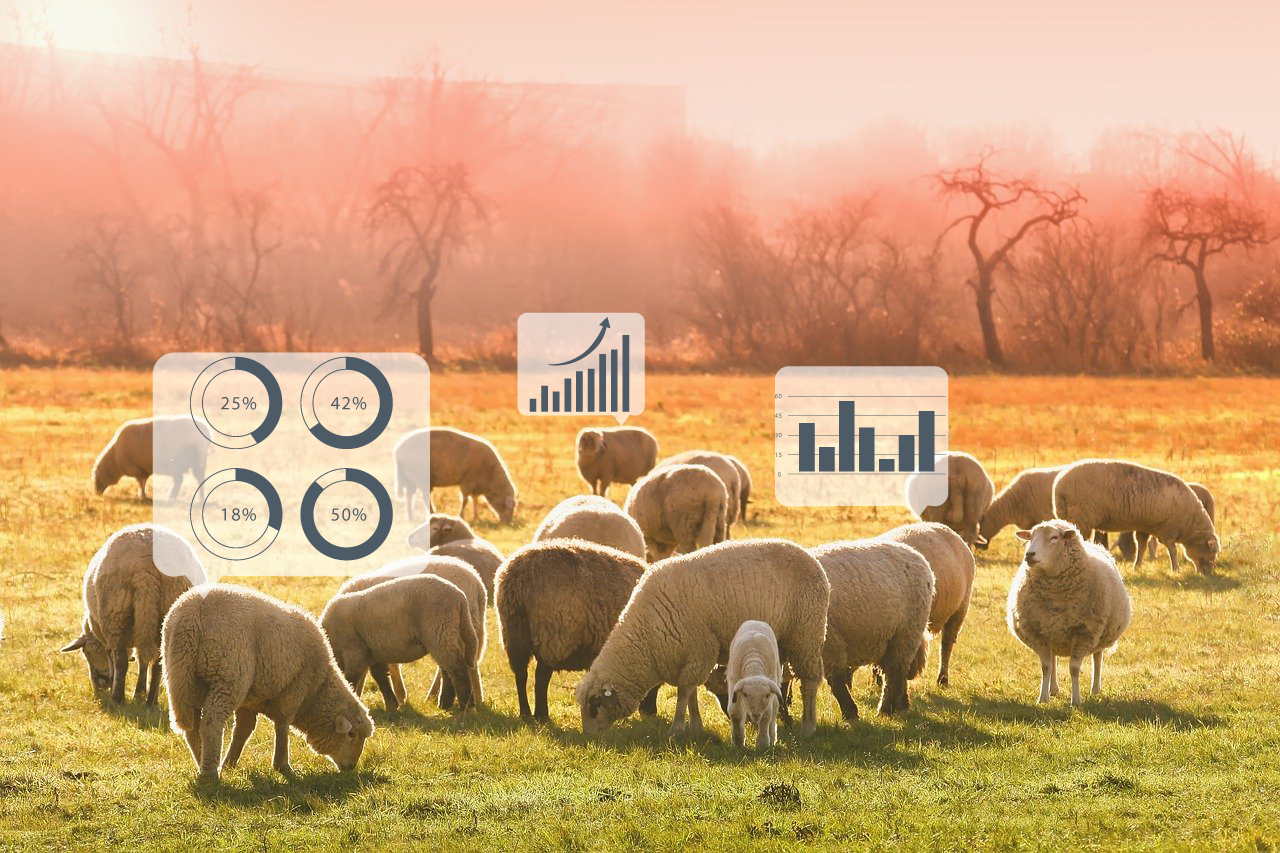The real meaning of precision farming

Terminology like digitalization and precision farming may sound futuristic and make people think of farming systems where machines do everything. On the contrary, precision farming is already a reality in many farms, and experience shows that it is not about cutting out the people. In 2020, the global precision agriculture industry generated $6.45 billion and is expected to generate $23.05 billion by 2030. Even though it interacts with technology, the technologies showing early success in precision livestock farming all have a common feature: improving and optimizing farmers’ daily tasks.
This includes many elements, such as paying attention to animal health and welfare, monitoring resource use and productivity, and carbon footprint and emissions. It also allows for data collection and sharing. This is one reason EU farmers and partners adhere to the EU Code of Conduct on Agricultural Data Sharing.
Emerging innovative technology can improve the farmer’s ability to spot and treat animal illness before it becomes a full-blown outbreak that can cost the lives of hundreds of animals and completely devastate a farmer’s livelihood. The use of smart technology creates a potential for spotting early signs of illness, limiting the use of medicine and costs.
Through continuous livestock monitoring, veterinarians and farmers have real-time info at their fingertips, allowing them to take action to keep diseases away from farms and our food supply. New technologies also allow farmers to efficiently use feed and other resources to avoid waste and limit the herd’s carbon footprint. Most importantly, precision farming can help uphold welfare standards by measuring animals’ vital signs consistently and objectively throughout their lifetime to pick up on the first sign of any change.
A wide range of commercially available technologies aims to reduce the occurrence and impact of health issues, such as sensors detecting lameness in cattle, microphones monitoring respiratory health in pigs, or cameras monitoring the presence of parasites in fish.
For example, researchers at KU Leuven in Belgium have developed a microphone and algorithm system using sound monitoring and analyzing technology that can identify the sound of a pig coughing as distinct from all other noises. Another example is the early detection of lameness through video analysis. As an early warning system, farmers and veterinarians can intervene sooner, reduce the animal’s risk of suffering from a severe and prolonged illness, and reduce the eventual use of antibiotics, hence responding to antimicrobial resistance.
Technologies are also widely available to monitor physical health and parameters, such as growth in poultry or estrus in dairy cattle to optimise insemination, increase pregnancy, and improve productivity. Technologies monitoring parameters related to the “nutrition,” “physical environment,” and “behavioural interactions” domains, such as feeding or drinking behaviour, air/water quality or activity, are also designed to optimise productivity and minimise the impacts of diseases.
Finally, various technologies still in development have focused on preventing the occurrence of undesired behaviours which can cause significant injuries, such as tail biting in pigs or feather pecking in poultry.
The connectivity of devices allows the system to be set up to send alerts to farmers and veterinarians either by SMS, through a web-based app or on a digital dashboard, instantly notifying them of a potential underlying health issue. These technologies can also be connected to a climate controller to adapt to the conditions as part of therapeutic response to a health problem.
The ability to monitor animals continuously in real-time throughout their lives and to control their environments means that both productivity and welfare can be improved through early detection of health problems, leading to targeted and reduced use of medication, lower mortality and improved health. These outcomes, in turn, have other social benefits, such as less waste, greater efficiency and lower environmental impact.
The potential of precision livestock farming to help reduce the duration and severity of diseases and injuries in livestock farming systems is promising: technologies can detect health issues early and help ensure optimal environmental conditions. These technologies could benefit welfare significantly if the data are used to support farmers in making effective management decisions, either with or without human intervention.
Furthermore, the smart data collected from thousands of farms can be studied to find solutions for management, disease, welfare, productivity and even environmental issues that have previously been based only on the experience of one company or small-scale research projects. Intelligent use of the large data sets that smart farming makes possible can be used to improve the results of smart farming itself further.
Research points to the great potential for these smart technologies to help livestock farmers monitor their animals’ welfare. Several countries are already investing in their development, reflecting their potential to be part of strategies to move towards more sustainable agriculture.
This is why it is also essential for all farmers to access broadband Internet in Europe!